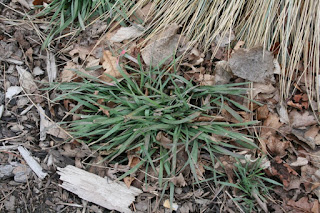As your lawn begins to wake up this spring, there are four things you need to do to get it started right. At the top of your list should be a spring lawn aeration. Aeration is one of the most important steps in maintaining a healthy lawn. The most effective aeration involves removing plugs or "cores" of soil from the lawn.
Core aeration reduces soil compaction and allows air, water and nutrients to reach the root area of your grass. We do not recommend "dethatching" a lawn. Once the lawn has been aerated, the next step is to work on improving the soil your grass is growing in. Start out with an application of ferti-lome HuMic, a highly concentrated soil conditioner. HuMic helps improve our clay soil structure, enhances nutrient uptake and encourages soil microbial activity. Next, put down some granular Revive®. Organically-based Revive® allows water to penetrate our clay soils more effectively. Once you've aerated your lawn and conditioned the soil, it's time to feed the grass. Ferti-lome's For All Seasons II fertilizes your lawn and acts against any seed that may have wintered over in your grass. This includes broadleaf and annual weed seeds as well as turf seed you may have sown earlier this spring. Check with us if you're planning to re-seed your lawn. Timing is important when applying For All Seasons II. Pre-emergents need to be down before the ground temperatures get warm enough for seeds to start sprouting. Typically, this is before mid-April. Use a rotary or drop spreader to apply For All Seasons II evenly across your lawn. Next, you must water the lawn in order to activate the pre-emergent. Finally, know what you're dealing with. These are 2 examples of grasses you may see in your lawn right now. Neither one is "Crabgrass", so crabgrass controls won't work on them. Whether it's weeds, lawn diseases or insect damage, correctly identifying your lawn's problem is key to picking the right solution. Bring a sample of your lawn into our Diagnostic Center for an analysis. Lawn samples should be about as big as a sheet of typing paper with 2" to 3" of soil and include a portion of healthy lawn along with the problem area. After a thorough examination of your lawn sample, we'll be able to recommend solutions to your particular problem. We do not charge a fee for our diagnostic services.
Core aeration reduces soil compaction and allows air, water and nutrients to reach the root area of your grass. We do not recommend "dethatching" a lawn. Once the lawn has been aerated, the next step is to work on improving the soil your grass is growing in. Start out with an application of ferti-lome HuMic, a highly concentrated soil conditioner. HuMic helps improve our clay soil structure, enhances nutrient uptake and encourages soil microbial activity. Next, put down some granular Revive®. Organically-based Revive® allows water to penetrate our clay soils more effectively. Once you've aerated your lawn and conditioned the soil, it's time to feed the grass. Ferti-lome's For All Seasons II fertilizes your lawn and acts against any seed that may have wintered over in your grass. This includes broadleaf and annual weed seeds as well as turf seed you may have sown earlier this spring. Check with us if you're planning to re-seed your lawn. Timing is important when applying For All Seasons II. Pre-emergents need to be down before the ground temperatures get warm enough for seeds to start sprouting. Typically, this is before mid-April. Use a rotary or drop spreader to apply For All Seasons II evenly across your lawn. Next, you must water the lawn in order to activate the pre-emergent. Finally, know what you're dealing with. These are 2 examples of grasses you may see in your lawn right now. Neither one is "Crabgrass", so crabgrass controls won't work on them. Whether it's weeds, lawn diseases or insect damage, correctly identifying your lawn's problem is key to picking the right solution. Bring a sample of your lawn into our Diagnostic Center for an analysis. Lawn samples should be about as big as a sheet of typing paper with 2" to 3" of soil and include a portion of healthy lawn along with the problem area. After a thorough examination of your lawn sample, we'll be able to recommend solutions to your particular problem. We do not charge a fee for our diagnostic services.








Do you put down these three items back to back or wait in between each application?
ReplyDeletePut the HuMic Down first, water in and wait a day. Put the Revive down next and water in. Wait a day and fertilize,
DeleteThanks for sharing such a valuable post.. Nice information.
ReplyDeletewe takes care of all needs to maintain commercial properties in Winnipeg. We are committed in providing superior snow clearing and lawn care services to all our customers using high-quality equipment.
lawn care services winnipeg
Commercial snow removal winnipeg